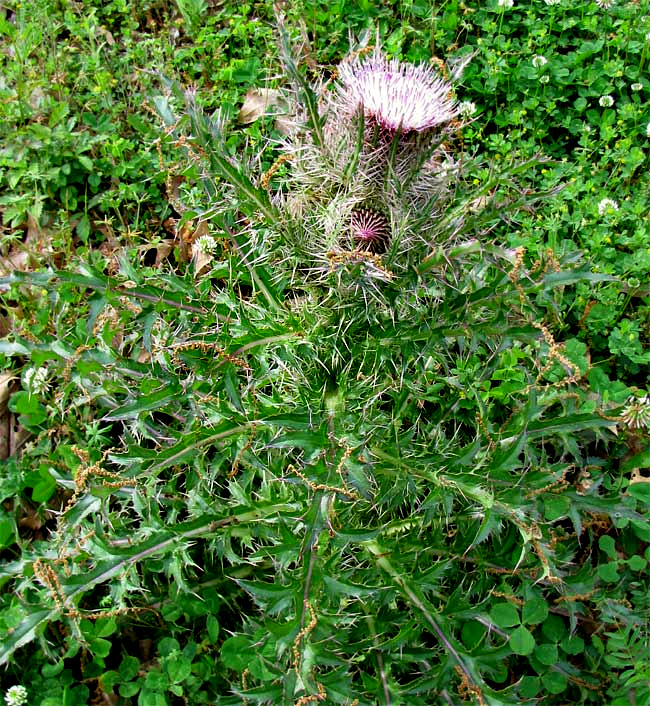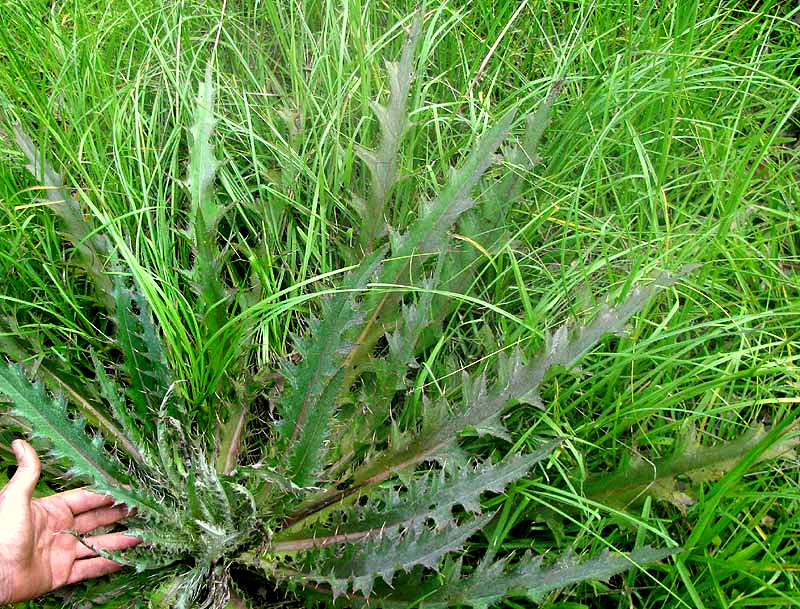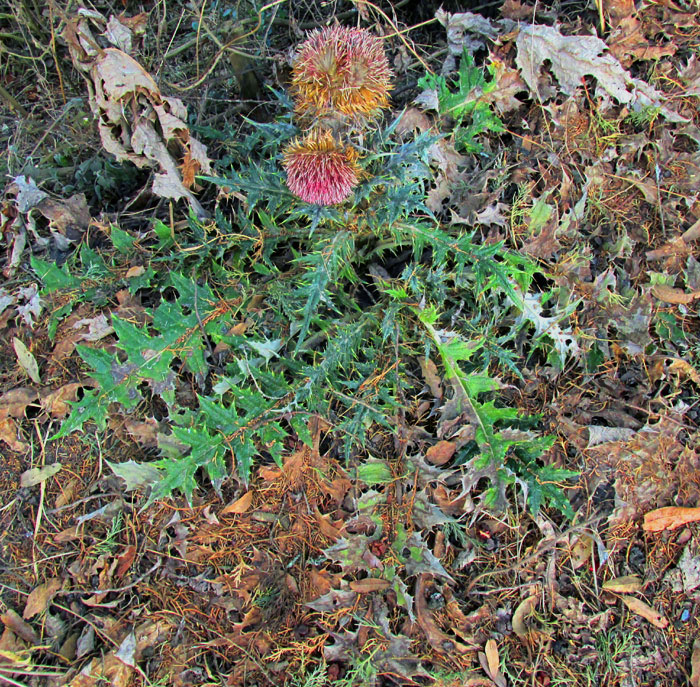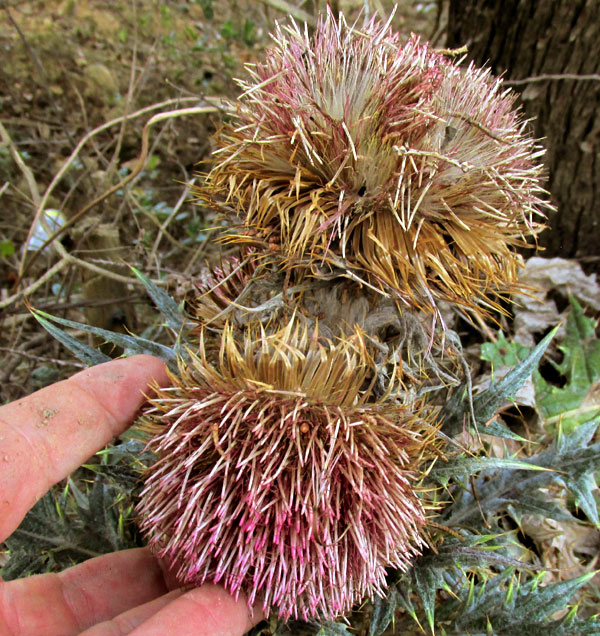Excerpts from Jim Conrad's
Naturalist Newsletter

from the the March 30, 2009 Newsletter issued from the woods of the Loess Hill Region a few miles east of Natchez, Mississippi, USA
BULL THISTLES
The thistles spoken of above as infested with leaf-footed bugs is the Bull Thistle, also called Purple Thistle, CIRSIUM HORRIDULUM. That's one above.
That specimen is about knee high but it's still growing. The purplish thing at its top is a flower head comprising maybe 50 individual flowers, for thistles are members of the Composite Family, and that's a composite flower structure.
The plant in the picture is able to be so large and robust this early in the season because Bull Thistles are biennials. During their first year they remain a low-lying cluster of radiating, stemless leaves -- a rosette -- storing photosynthesized energy in a big taproot. When spring of the following year arrives they "bolt," drawing energy from their taproot to fuel a spurt of growth that no annual depending solely on currently photosynthesized energy can match.
The humongous number of spines on that plant are hard and sharp. Each morning when I pass among the plants to dig the daily garlic for my breakfast stew, I walk gingerly indeed. Of course a grazing cow getting a tongue wrapped around a Bull Thistle leaf is in a mess. Note the species name, horridulum.
Unlike most pasture and roadside weeds, this species is native American, originally growing in meadows, woods borders and shores along the Coastal Plain. They're very common around here, each plant producing hundreds of windborne seeds, so the species spreads rapidly, despite some people chopping down every one they see.
from the July 8, 2012 Newsletter issued from the woods of the Loess Hill Region a few miles east of Natchez, Mississippi, USA
BULL THISTLE ROSETTES
Speaking of plants with leaves clustered toward the base, the Bull Thistles, CIRSIUM HORRIDULUM, in the orchard are biennials that overwinter as ground-hugging rosettes, and already here in early July their rosettes are well formed. A rosette over a yard across
(1m), is shown below.

The general idea behind the biennial, rosette-forming strategy is that for months of the first year the plant photosynthesizes and stores energy in the form of carbohydrates kept in storage roots and the plant body, then on the second year the plant draws upon that store energy to fuel a spurt of growth enabling the plant to overtop surrounding herbs with no stored energy. Bull Thistles do have stout taproots and fleshy lateral roots. In an emergency these starchy roots can be cooked and eaten during their first year, but during the second they are too tough.
entry from field notes dated April 17, 2022, taken in disturbed/reforesting borderline cloudforest within 1km of Valle de los Fantasmas, elevation ±2,320m (7600 ft), with limestone bedrock; about 40kms (24 miles), straight-line, ESE of San Luis Potosí, San Luis Potosí state, MÉXICO, (N22.06°, W100.62°)
BULL THISTLE IN MEXICO

Along a one-lane dirt road running along the valley floor, in deep shade, I was surprised to meet the old friend shown above. Bull Thistles, despite being considered classic weeds, are native to to the eastern US, but I hadn't heard of them in Mexico. A closer look at their giant heads confirmed that it was really the Bull:

Once I looked into it, I found Bull Thistles have been collected in several places in Mexico's central highlands, as well as the uplands of Chiapas, Mexico's southernmost state. They're not common, yet. I bet the locals, like me, take a second look when they pass by.